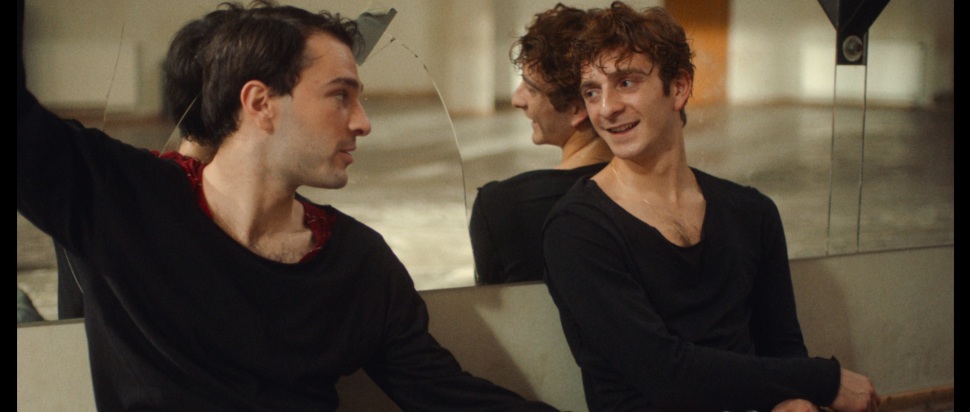And Then We Danced
The tinderbox of Georgia's conservative society is the backdrop for this coming-of-age romance about a young male dancer exploring same-sex desires within the strict Georgian folk dance community
Homosexuality is not criminalised in Georgia: in fact, Georgian law has specific protections against homophobic crimes and there have been calls to introduce same-sex marriage. But legislation alone cannot dissolve generations-deep prejudice, and homophobia remains high in the former Soviet state, particularly among older traditionalists. Situated in the world of professional Georgian dance and a backdrop of deep-seated homophobia, Swedish-Georgian director Levan Akin’s third feature sets the immovable object of conservative tradition against the unstoppable force of youthful longing.
Merab (Levan Gelbakhiani) and older brother David (Giorgi Tsereteli) are training at the local traditional Georgian dance school, run by mirthless perfectionist Aleko (Kakha Gogidze). Following in their (now separated) parents’ and grandmother’s footsteps, Merab is talented and passionate while David is as confident as he is gallantly uncommitted to his studies. Where Merab is a knot of put-upon insecurity, his slight frame and puppyish eyes full of romantic softness, David’s elder sibling is invested with a squared-off, masculine cockiness. There’s an air of danger, and even tragedy about David, hovering in the margins of the frame while the story focuses on Merab, making a late-stage tender moment between the two all the more moving.
While Merab’s dance partner, Mary (Ana Javakishvili), is clearly in love with him, some invisible, undefined force sits between them preventing his reciprocation. That force is given figure with the arrival of Irakli (Bachi Valishvili), a talented newcomer to the dance group. Furtive glances between Merab and Irakli initially read as rivalry but soon develop into something else, hidden from view as teacher Aleko bellows the mantra that “there is no sex in Georgian dance.”
The film’s central performances are captivating – Gelbakhiani bringing tender vulnerability to Merab, while Valishvili’s eyes sparkle with desire and promise. Javakishvili brings an unspoken sadness to her Mary, silently witnessing what is happening between Merab and Irakli. Mary is somewhat underwritten – especially in her passive acceptance as the third point in a love triangle – but like Merab’s brother David, her situation in the margins of the film suggests unexplored, unspoken interiority. Similarly, a subplot involving an alluring young man Merab encounters on a bus feels underdeveloped from a narrative standpoint, but is important in establishing the sense of a thriving, underground gay youth culture clashing with endemic prejudice and the constant threat of exposure and violence.
And Then We Danced’s strongest suit, however, is in Lisabi Fridell’s vital cinematography. The bare white daylight of the dance gymnasium is contrasted against the lush warmth of Merab’s family apartment, illuminated at night by soft yellows and reds. Fridell emphasises space throughout; the softly furnished, cosy interior of Merab’s home seems to spill out into the building’s courtyard, with neighbours pottering among the foliage and walkways.
Long shots with telephoto lenses are frequently used with conversations between characters. The distance between observer and observed is often emphasised by placing some out-of-focus object – a doorframe, a dancer’s leg – in the foreground: a visual irony in crafting private moments from far away. It’s an effect that serves to enrich and intensify important moments between Mary, Mekab and Irakli; the tension of these scenes find their release in dance sequences shot in close-up and handheld, in sensual, subjective proximity. A bravura shot that tracks Merab leaving his brother’s wedding party is undoubtedly the film’s masterstroke, a minute-long sequence whose use of space both depicts Merab’s heartbreak and tells a handful of stories in miniature of marginal characters who are just as bound by tradition as Merab.
Released by Peccadillo Pictures
